
Care Of Rabbit's Foot Fern How To Grow Davillia Fejeensis Ferns
Free 2-day Shipping On Millions of Items. No Membership Fee. Shop Now!
My rabbit's foot fern. He's just now growing in his furry rhizomes. r/ferns
Every two weeks your rabbit's foot fern care should also include watering the plant with a liquid houseplant fertilizer mixed at half strength. Rabbit's foot ferns need repotting about every two years, and the best time to repot is in spring. Mix regular potting soil half-and-half with sand to create an ideal medium for rabbit's foot ferns.
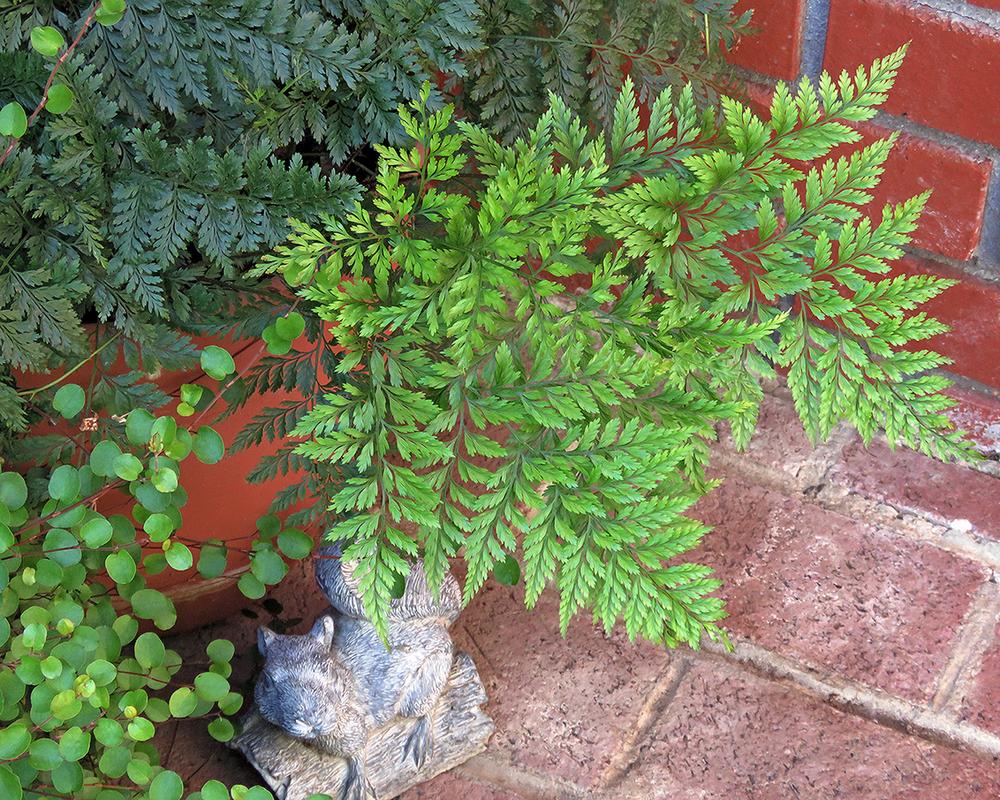
Black Rabbit's Foot Fern (Davallia trichomanoides)
About. A Rabbit's Foot fern, Davillia fejeensis, is the only fern in the Davalliaceae family and is in the order Polypodiales. Originally from Southeast Asia and Fiji, this is a very unique looking, compact plant that never makes a mess like other indoor ferns such as a Boston Fern. A Rabbit's Foot fern is a type of epiphyte which means it can grow in rock crevices and on trees.

Davallia Fejeensis Rabbits Foot Fern 7cm Indoor Plants Plantsmith
If you don't have a room humidifier, place the fern's container on a tray of wet pebbles to increase the humidity around the plant. Refill the tray as the water evaporates. 3. Maintain a 60-75 °F (16-24 °C) environment. The rabbit foot fern will thrive indoors in comfortable house temperatures.
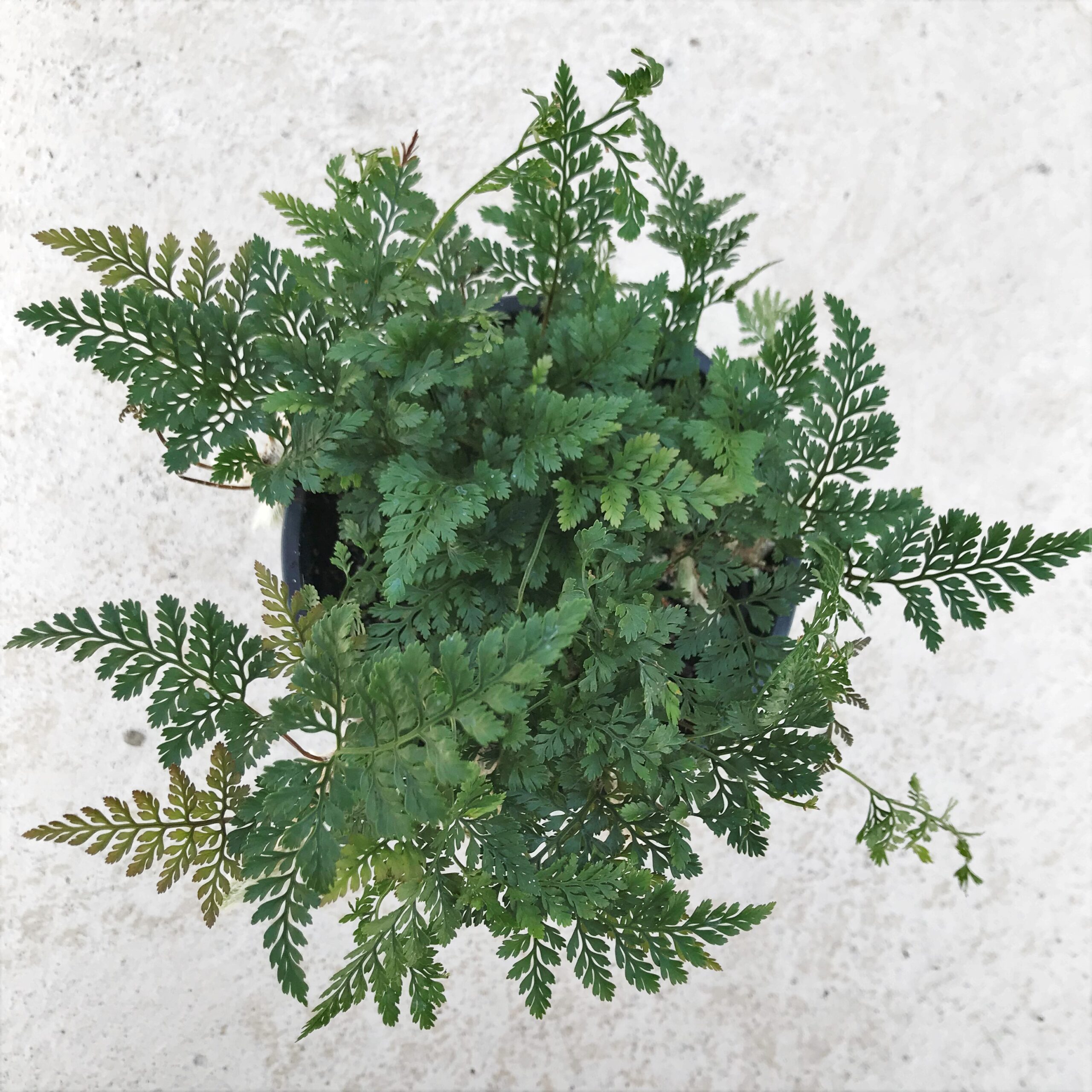
Davallia tyermanii White Rabbit's Foot Fern (4.5" Pot) Little Prince To Go
The Rabbit's foot fern, Davallia solida (var. fejeensis), is a beautiful tropical fern with delicate, complex fronds that form a low-growing bush of glossy green foliage.The fern gets its name from the distinctive furry rhizomes that grow from the crown of the fern over the surface of the soil, and often trail over the sides of its pot.

Davallia Fejeensis (Rabbit's Foot Fern) Plants, Fern plant, Rabbit foot fern
Davallia solida var. fejeensis (also known as Davallia fejeensis) is the species most often known as rabbit's foot fern.This is the most common species sold in cultivation, with fronds as much as 18 inches long. D. canariensis (hare's foot fern) grows up to 20 inches tall and as much as 40 inches wide. Its trailing rhizomatous roots are larger and coarser than those of rabbit's foot fern.
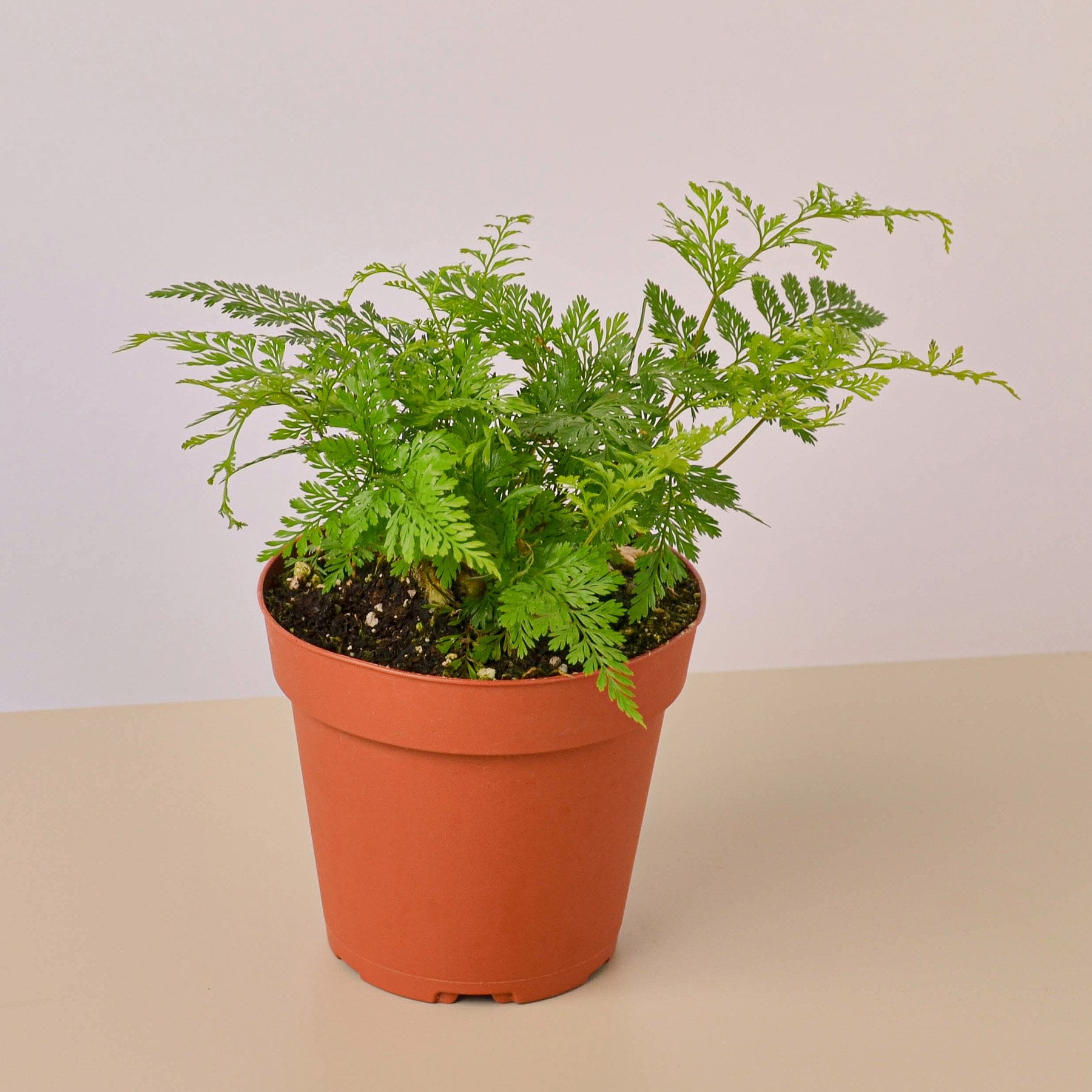
Rabbit's Foot Fern 4" Pot
The Rabbit's Foot fern (Davallia Fejeensis) is a slow-growing, moisture-loving tropical plant. Like all ferns, they have been around for eons. Their primordial fronds, which can grow up to two feet, will add a serene presence to your windowsill, hanging basket, or terrarium. Unlike many popular houseplants, the Rabbit'
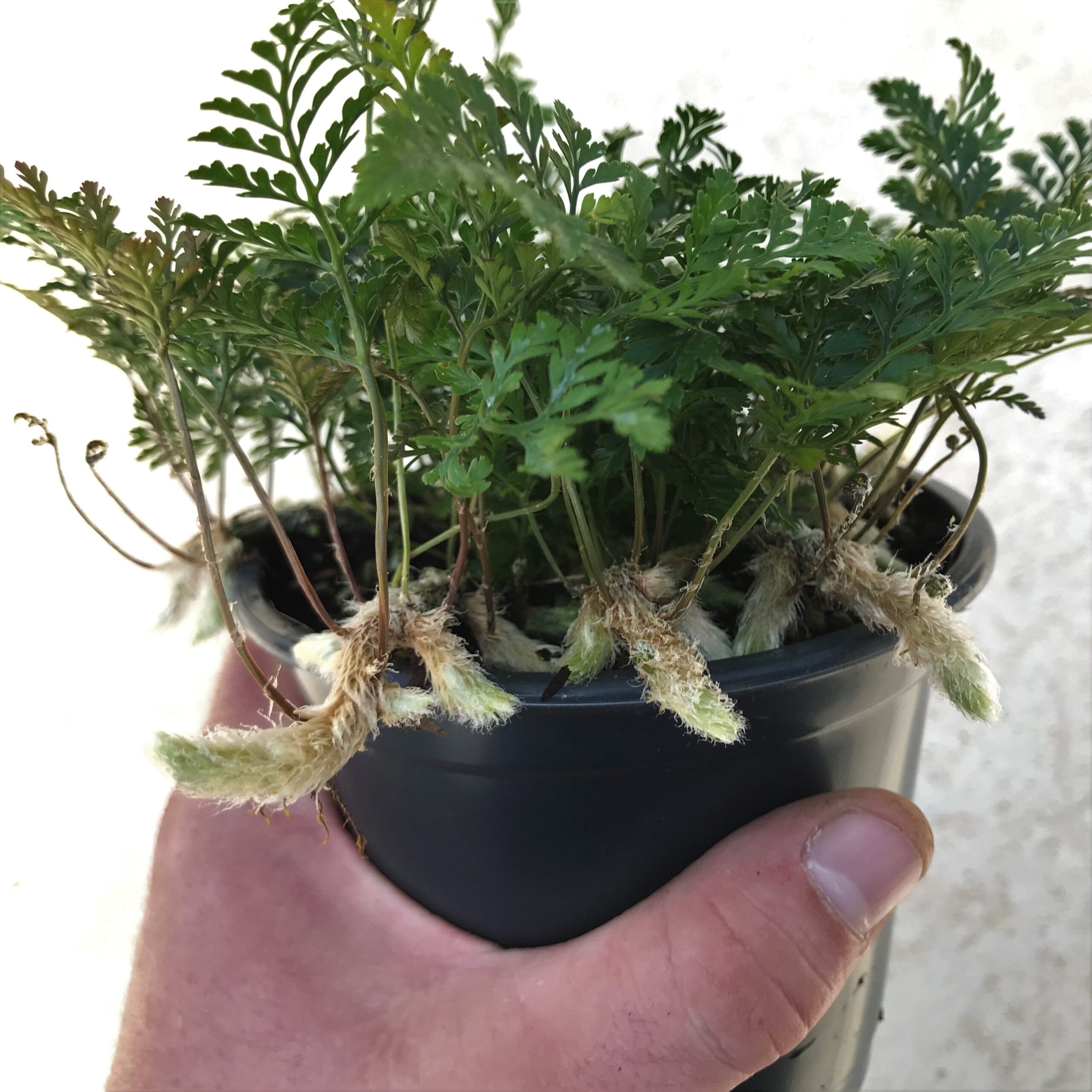
Davallia tyermanii White Rabbit's Foot Fern (4.5" Pot) Little Prince To Go
The Rabbit's Foot Fern can grow up to about 2-3 feet long and about 6 inches wide. This fern is well-suited to a floor planter or a hanging pot. Because the foliage and rhizomes are long enough to hang over the side of the pot, many people recommend displaying the Rabbit's Foot Fern as a hanging plant. Additionally, hanging the Rabbit Foot.

RabbitFoot Fern Tropical Biodiversity
Rabbit's Foot Fern Overview. The perennial evergreen fern Davallia fejeensis is more commonly known by its popular names Rabbit's Foot Fern and Hare's Foot Fern.. A slow-growing plant, this fern grows on the surface of the soil. The furry rhizomes also grow in a variety of shades from yellow to brown, and sometimes gray.

Rabbit's Foot Fern Pet Safe Houseplant Air Purifying Etsy Rabbit foot fern, House plants
Common name: Rabbit's foot fern Botanical name: Davallia species Exposure: Bright, indirect light; tolerates lower light. Foliage: Deep green, lacy, shield-shaped fronds on dark brown, wiry stems. Growth habit: Rabbit's foot fern is an epiphyte, meaning that in nature it grows on another plant (such as draped on a tree branch). Though an epiphyte uses its host for physical support, it draws.

White Rabbit's Foot Fern Humata Tyermannii
What Is A Rabbit's Foot Fern? Rabbit's foot fern (Davallia fejeensis, aka Lacy Paw or Fijian Hares' Foot Fern), is native to Fiji. It's an epiphyte, like bromeliads and orchids, which means it takes nutrients from the air, rainwater, or forest debris through the fronds and rhizomes.
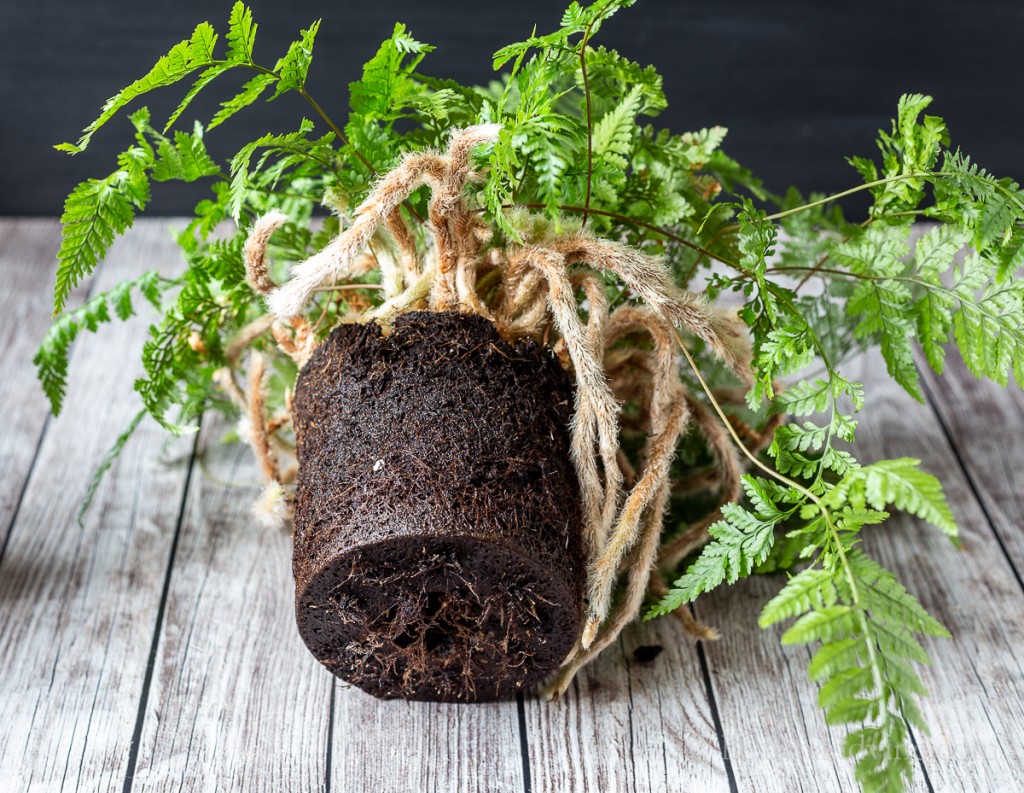
Growing Rabbit's Foot Fern A Not So Finicky House Fern
Above: A Live Rabbit's Foot Fern in a 6-inch pot is $14.99 from EmilysGrowGarden on Etsy. Grow this fern in a hanging basket to show off the intriguing rhizomes. It also grows well in shallow pots, as the majority of the growth is above the soil. This plant looks lovely when added to a fern collection, greenhouse, or as a specimen indoor plant.
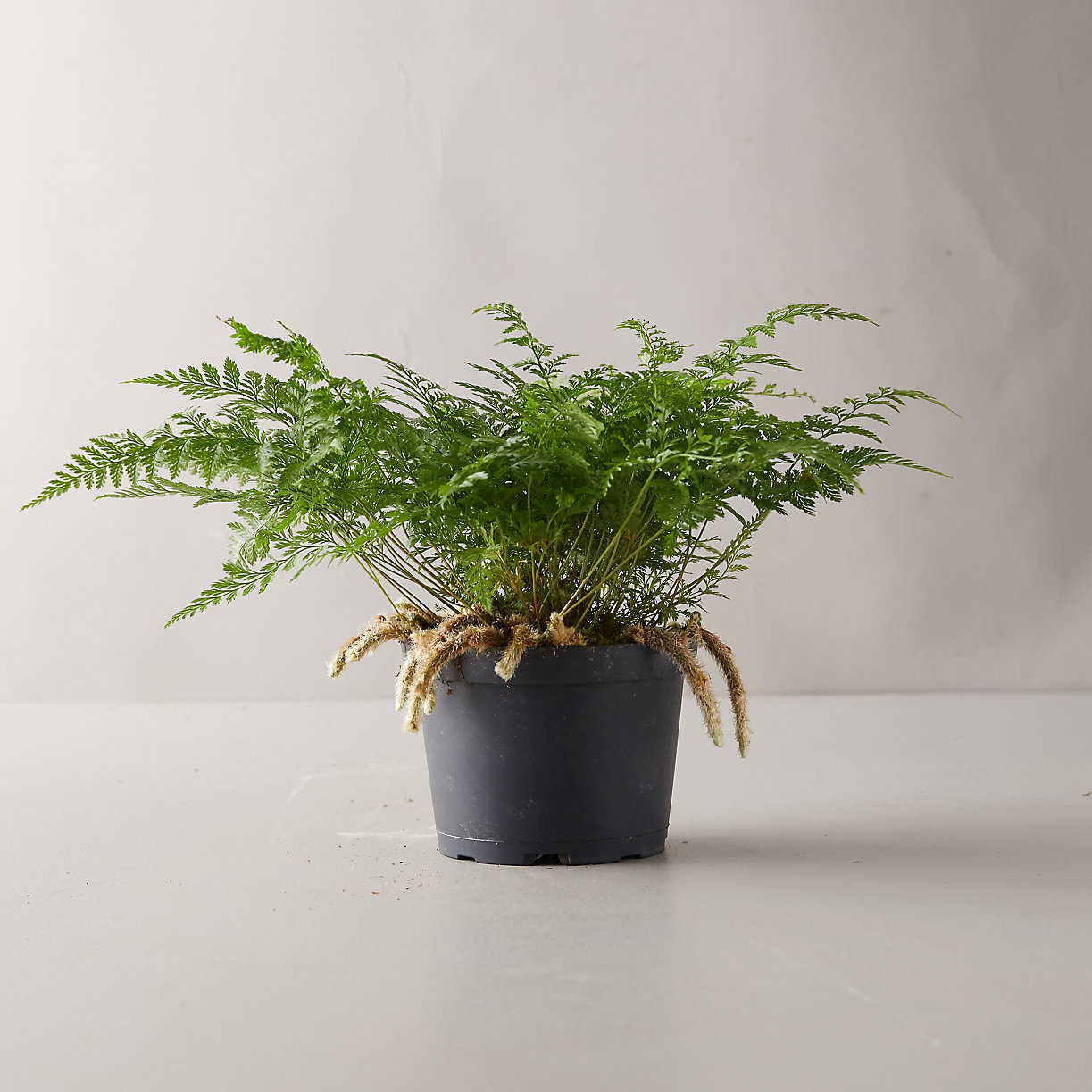
Rabbit Foot Fern Care How to Grow Rabbit's Foot Fern Indoors
Rabbit's foot fern care is simple! Let's talk about what you need to grow rabbit's foot fern. Sun and Temperature for Rabbit Foot Fern. Like other ferns, rabbit's foot needs bright, indirect sunlight - about 6 to 8 hours per day for adequate growth. Outdoors, the shade of trees, porch coverings, and shrubs suffice.

Growing Rabbit's Foot Fern A Not So Finicky House Fern
Rabbit's Foot Fern. Rabbit Foot Fern Features: An Overview. Rabbit foot ferns do not need as much humidity as traditional fern plants. Mature Davallia fejeensis plants can grow as long as two feet. Rabbit foot fern plants are evergreen and keep their color in every season.
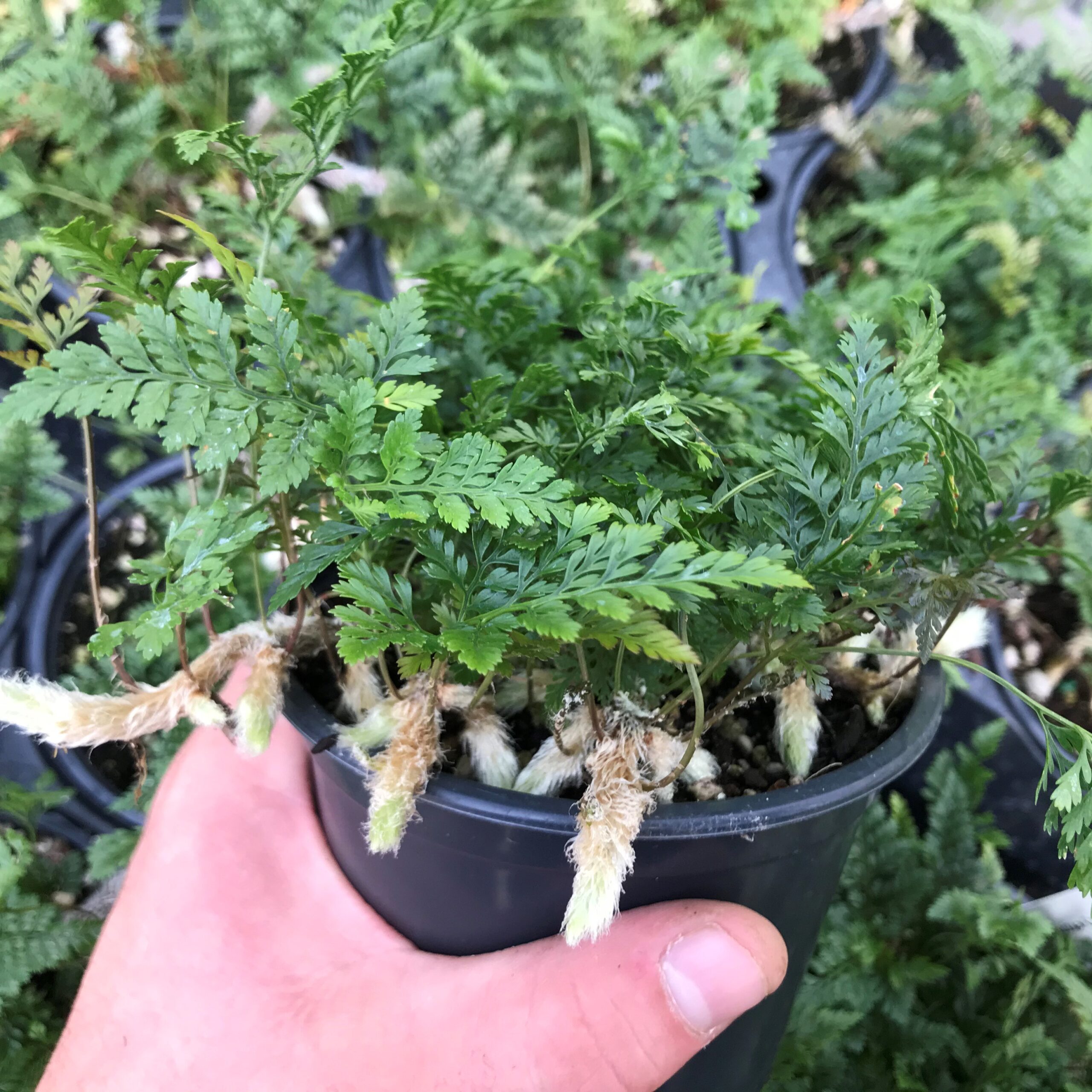
Davallia tyermanii White Rabbit's Foot Fern (4.5" Pot) Little Prince To Go
Rabbit's Foot Fern Care Temperature. The temperatures of this plant range from 60-75ºF are advised. No lower than 55ºF.[4.5] Light. Provide indirect sunlight - avoiding direct sunlight. Direct sunlight will scorch the leaves and turn the rhizomes brown, especially with low humidity levels. A small amount of sun (not midday sun) will not.

Repotting A Rabbit’s Foot Fern Plant How And When To Repot Rabbit’s Foot Ferns Rabbit foot
Rabbit's Foot Fern Care. The Rabbit's Foot Fern requires a soil that drains well but can retain a certain degree of moisture. Humidity should be on the higher side of average if possible - ideally over 50%. Temperatures should be maintained around 65 degrees Fahrenheit. Water as required to keep soil moist.